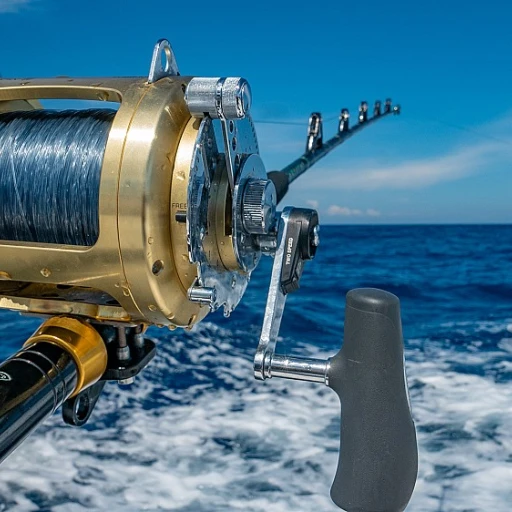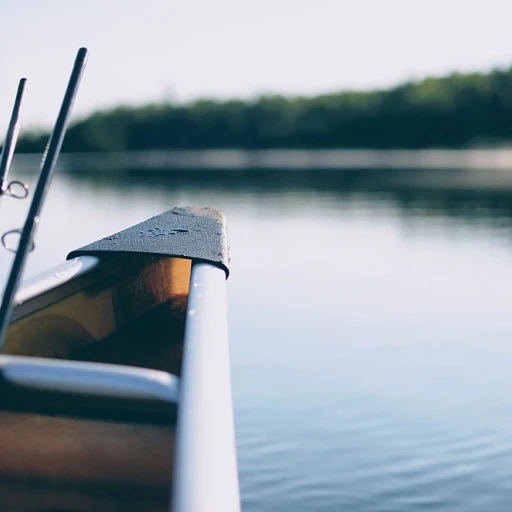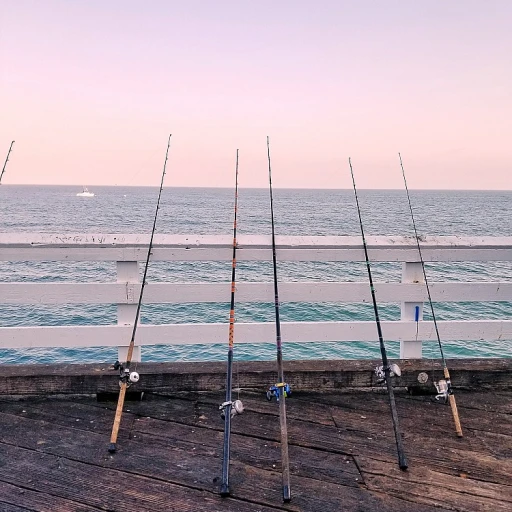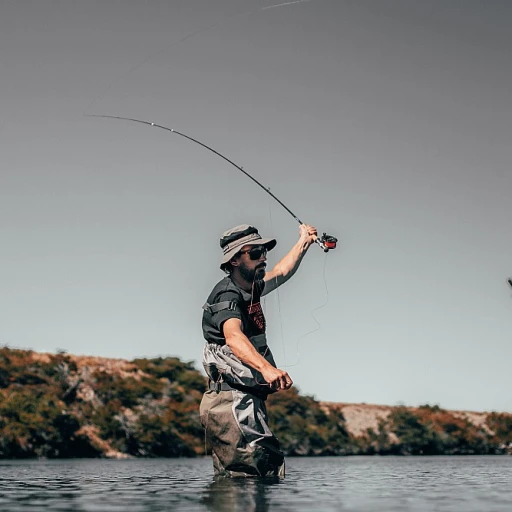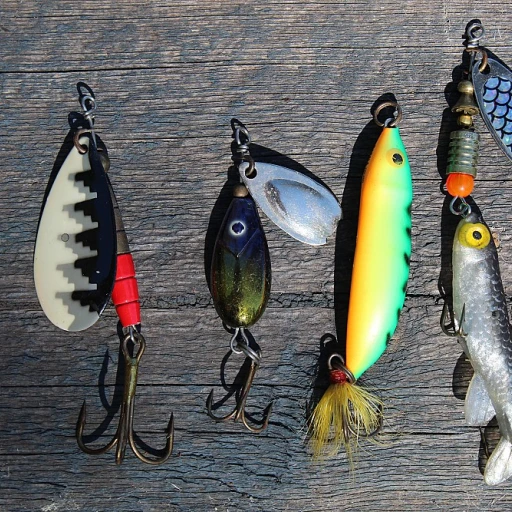
The Basics of Barbed and Barbless Hooks
The Fundamentals of Hook Designs
When it comes to recreational fishing, understanding the differences between barbed and barbless hooks is crucial for anglers. Both types of hooks have unique features that cater to different fishing styles, and the right choice can influence your fishing experience significantly.
A barbed hook, as the name suggests, features a small pointed extension, or barb, that protrudes from the hook's main point. This design makes it challenging for a fish to escape once it's hooked, as the barb acts as a stopper. Barbed hooks are commonly used for various types of fishing, including fly fishing and spin fishing, providing anglers with a higher chance of retaining their catch.
On the other hand, barbless hooks are designed without the protruding barb. This makes them less likely to cause injury to the fish, appealing to those who practice catch and release. The clean design also allows for easier and quicker removal from the fish, reducing stress and injury, thus lowering the mortality rate among released fish.
The choice between barbed and barbless hooks is not only about personal preference but also about fishing ethics and the type of fish targeted. For those passionate about preserving fish populations, barbless hooks might be the more suitable option. Meanwhile, anglers aiming to maximize their catch might prefer the reliability of barbed hooks.
For more tips on organizing your fishing gear, such as your rods, check out these creative solutions for organizing your fishing rods, ensuring you have the right setup for your fishing adventures.
Advantages of Barbed Hooks
Reasons Why Anglers Prefer Barbed Hooks
Barbed hooks are a staple in the fishing community for many anglers due to their effectiveness in ensuring a successful catch. The presence of the barb—an additional protrusion on the hook's point—makes a significant difference in the retention of fish. This is particularly important when targeting species like trout or brown trout, where the mortality rate can be impacted by the type of hook used.
Here are some reasons why you might choose a barbed hook for your next fishing adventure:
- Enhanced Retention: The barb plays a crucial role in keeping the fish hooked once they're on. This feature is especially beneficial during moments when a fish may attempt to shake off the bait or lure.
- Reduced Risk of Losing Fish: In scenarios like fly fishing or fly tying, where precise techniques are involved, barbed hooks minimize the chance of losing fish due to sudden movements or poor hook sets.
- Ideal for Catch and Keep: If your goal is to catch and keep rather than catch and release, barbed hooks are often preferred to ensure that the effort invested in catching the fish will yield results.
Despite these advantages, it is essential to consider the release techniques as well as the potential impacts on fish health when using barbed hooks.
Benefits of Barbless Hooks
Reaping the Rewards of Barbless Hooks: A Tangle-Free Adventure
Choosing barbless hooks can significantly enhance your fishing experience and align with the catch-and-release ethos embraced by many anglers today. One major advantage of using barbless hooks is the reduced mortality rate among fish, particularly for species like brown trout. This is because barbless hooks cause less damage, even when the fish is deeply hooked. With easier removal, they are less stressful on the fish, making the release process more humane and effective. For those who enjoy the joys of fly fishing, barbless hooks offer another layer of benefit by enabling better fish handling. Releasing a catch without struggling against the barbs ensures the fish will swim away stronger, preserving fish populations for future fishing seasons. Additionally, when fishing in catch-and-release waters, especially during peak months from july to september, opting for barbless hooks demonstrates responsible angling. From a practical standpoint, barbless hooks save precious time. Given that they can be disengaged more swiftly than barbed counterparts, anglers can return to casting faster, improving the overall efficiency of their fishing session. Additionally, barbless hooks are less likely to get caught on clothing or other gear, reducing the frustration of untangling mishaps right when the action heats up. While barbed barbless hooks may present their own set of challenges, as explored in other sections, the seamless experience they offer comes with undeniable advantages, especially for catch release enthusiasts. For further insights on enhancing your catch-and-release strategies, you might want to explore the best strategies for using mullet bait in recreational fishing. In the spirit of catch-and-release fishing, barbless hooks symbolize a commitment to both skillful angling and environmental stewardship, ensuring that our waterways remain thriving, productive habitats for years to come.Challenges of Using Barbed Hooks
Considerations with Barbed Hooks
While barbed hooks can offer certain advantages in securing your catch, they also come with a set of challenges that anglers should be mindful of. One significant issue is the potential for injury to both fish and angler. The barbs on these hooks can cause substantial damage to the fish, particularly if you intend to release it back into the water. This can increase the mortality rate among released fish, with species like brown trout being especially vulnerable.
Additionally, the process of removing a barbed hook from a fish often requires more time and effort. This not only causes stress to the fish but can also delay the angler from resuming fishing, reducing overall efficiency during peak fishing times such as those prime months of July, June, and September. Anglers aiming for a catch-and-release strategy may find barbed hooks counterintuitive, as the difficulty in extraction might not align with the ethos of minimizing harm.
Moreover, in fast-paced situations such as fly fishing, barbed hooks can lead to complications if they are caught in fly tying materials or clothing. Losing a fish due to complicated retrieval processes during these moments can be frustrating.
Another consideration is the legal implications. Many regions promote or regulate the use of barbless hooks to preserve fish populations and support sustainable fishing practices. Before setting out on your fishing adventure, always check local regulations, especially when targeting sensitive species during peak periods like March and February.
Despite these challenges, some anglers prefer the reliability of a barbed hook's capability to secure a catch, especially in competitive environments or when battling larger, stronger fish. Ultimately, the key is to match your fish hook choice with your fishing objectives and local guidelines. Understanding these challenges will help you decide whether barbed hooks are the better option for your fishing style.
Challenges of Using Barbless Hooks
Overcoming the Hurdles with Barbless Hooks
For many anglers, the decision to use barbless hooks in their fishing adventures comes with a set of challenges that demands adjustment and skill. Those who transition from barbed to barbless hooks might initially find some obstacles, but understanding these can ultimately improve the fishing experience. Taking the plunge into barbless hook usage requires patience and practice. One of the most encountered difficulties is the potential to lose fish more frequently than before. Without the extra grip that barbs provide, fish like trout can more easily wriggle free, especially when there's a slack in the line or during aerial acrobatics. Anglers often realize that increasing tension and maintaining steady pressure are crucial factors when fishing with barbless hooks. Barbless hooks, while beneficial for catch and release, call for more dexterity and attentiveness. It's not uncommon to find that a fish might thrash itself free during the fight, leading to a missed catch. Some anglers experience frustration over the loss of potentially large catches which can test one's resolve to continue using these types of hooks. Despite these challenges, the use of barbless hooks invites anglers to refine their techniques, like improving their hook setting skills and being keener on line management. Fly fishing enthusiasts, in particular, may need to adapt their fly tying methods to work better with barbless hooks, ensuring the flies are securely attached despite the minimal contact. Ultimately, while barbless hooks introduce a learning curve for anglers, overcoming these hurdles can lead to more rewarding fishing experiences and contribute to an eco-friendlier practice with a lower mortality rate for the fish upon release.Choosing the Right Hook for Your Fishing Style
Finding the Perfect Hook for Your Fishing Style
Choosing between barbed and barbless hooks can significantly impact your fishing experience. Each type of hook has its unique advantages and challenges, as discussed in previous sections. To make the right choice, consider your fishing style and the specific conditions you'll be facing.
For anglers who prioritize catch and release, barbless hooks are often the better option. They reduce the mortality rate of fish, making it easier to release them unharmed. This is particularly important when fishing for species like trout, where conservation is key. Barbless hooks also offer a smoother release, saving time and effort during your fishing trip.
On the other hand, if you're focused on maximizing your catch and minimizing the risk of losing fish, barbed hooks might be more suitable. The barb provides extra security, ensuring that once a fish is hooked, it's less likely to escape. This can be crucial in competitive settings or when targeting larger fish.
Consider the type of fishing you enjoy. If you're into fly fishing, the choice between barbed and barbless can affect your fly tying techniques and the overall experience. Fly anglers often prefer barbless hooks for their ease of use and the challenge they present, enhancing the skill required to land a fish.
Ultimately, the decision will depend on your personal preferences and the specific fishing conditions. Whether you're fishing in july june or november october, adapting your hook choice to the season and target species can make a significant difference. Remember, the right hook can enhance your fishing adventure, making it more enjoyable and successful.

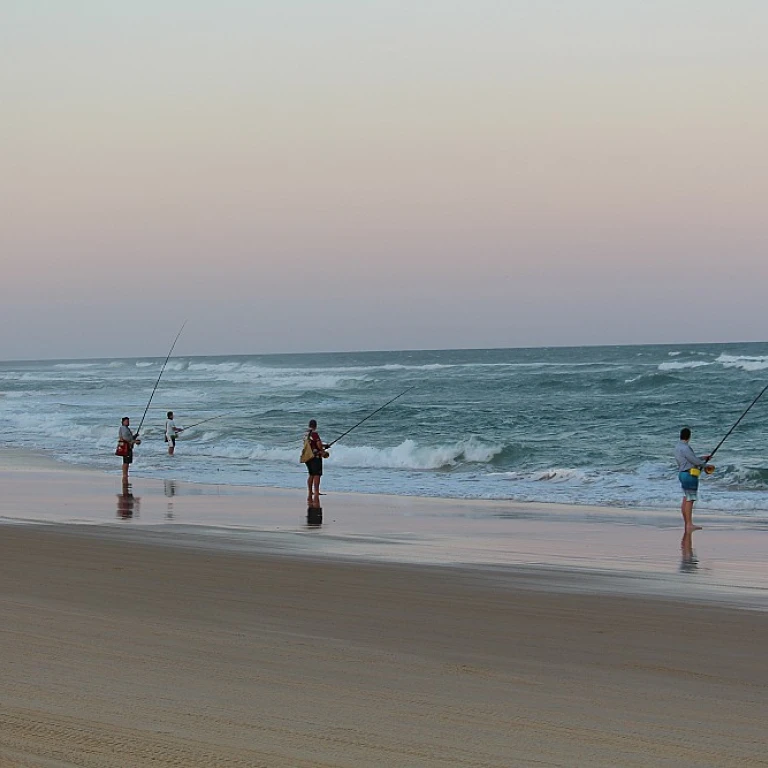
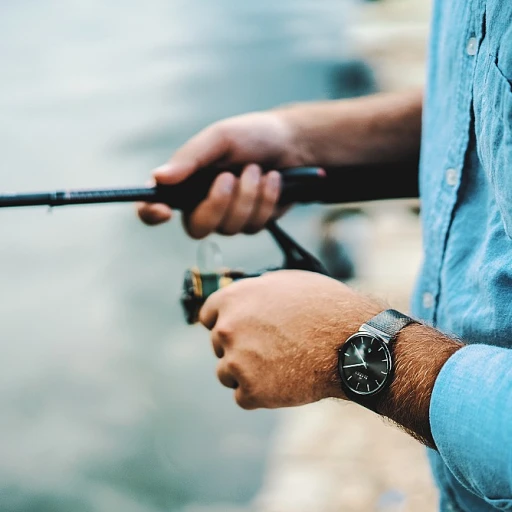
-large-teaser.webp)



